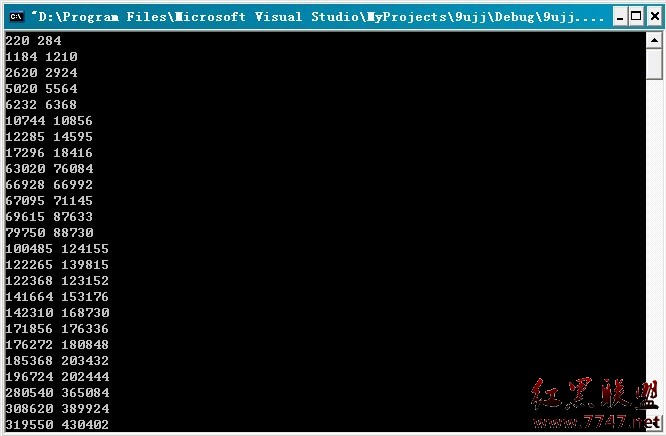C语言的HashTable简单实现
HashTable是在实际应用中很重要的一个结构,下面讨论一个简单的实现,虽然简单,但是该有的部分都还是有的。
一,访问接口
创建一个hashtable.
hashtable hashtable_new(int size) // size表示包含的接点个数。
存入key-value至hashtable中。
void hashtable_put(hashtable h,const char* key,void *val);
根据key从hashtable中取出value值。
void * hashtable_get(hashtable h,const char *key);
释放hashtable。
void hashtable_free(hashtable h);
释放单个hash 接点
void hashtable_delete_node(hashtable h, const char *key);
二,数据结构
hash接点的结构:
[cpp]
typedef struct hashnode_struct{
struct hashnode_struct *next;
const char *key;
void *val;
}*hashnode,_hashnode;
这个结构还是很容易理解的,除了必须的key-value之外,包含一个用于冲突的链表结构。
hashtable的数据结构:
[cpp]
typedef struct hashtable_struct{
pool_t p;
int size;
int count;
struct hashnode_struct *z;
}*hashtable,_hashtable;
对这个结构说明如下:
pool_t:内存池结构管理hashtable使用的内存。结构参考"C语言内存池使用模型"
size:当前hash的接点空间大小。
count:用于表示当前接点空间中可用的hash接点个数。
z:用于在接点空间中存储接点。
三,创建hashtable
代码如下:
[cpp]
hashtable hashtable_new(int size)
{
hashtable ht;
pool_t p;
p = _pool_new_heap(sizeof(_hashnode)*size + sizeof(_hashtable));
ht= pool_malloc(p, sizeof(_hashtable));
ht->size = size;
ht->p = p;
ht->z = pool_malloc(p, sizeof(_hashnode)*prime);
return ht;
}
这个函数比较简单,先定义并初始化一个内存池,大小根据size而定,所以在实际使用时,我们的size应该要分配的相对大点,比较好。
四,存入key-value值
在这个操作之前,先要定义一个根据KEY值计算hashcode的函数。
[cpp]
static int hashcode(const char *s, int len)
{
const unsigned char *name = (const unsigned char *)s;
unsigned long h = 0, g;
int i;
for(i=0;i<len;i++)
{
h = (h << 4) + (unsigned long)(name[i]); //hash左移4位,当前字符ASCII存入hash
if ((g = (h & 0xF0000000UL))!=0)
h ^= (g >> 24);
h &= ~g; //清空28-31位。
}
return (int)h;
}
这个函数采用精典的ELF hash函数。
代码如下:
[cpp]
void hashtable_put(hashtable h, const char *key, void *val)
{
if(h == NULL || key == NULL)
<span> </span>return;
int len = strlen(key);
int index = hashcode(key,len);
hashtable node;
h->dirty++;
if((node = hashtable_node_get(h, key,len, index)) != NULL) //如果已经存在,就替换成现在的值,因为现在的比较新。
{
n->key = key;
n->val = val;
return;
}
node = hashnode_node_new(h, index); // 新建一个HASH NODE接点。
node->key = key;
node->val = val;
}
hashtable_node_get用于查找该KEY是否在HASH中已经存在,实现很简单,如下:
[cpp]
static hashnode hashtable_node_get(hashtable h, const char *key, int len, int index)
{
hashnode node;
int i = index % h->size;
for(node = &h->z[i]; node != NULL; node = node->next) // 在index值 [HASH值] 所对应的HASH桶上遍历寻找
if(node->key != NULL && (strlen(node->key)==len) && (strncmp(key, node->key, len) == 0))
return node;
return NULL;
}
新建一个HASH NODE接点如下:
[cpp]
static hashnode hashnode_node_new(hashtable h, int index)
{
hashnode node;
int i = index % h->size;
h->count++;
for(node = &h->z[i]; node != NULL; node = node->next)
if(node->key == NULL) //这里的处理是:如果在HASH桶中存在某个值,KEY是空的,表明这个值已经没有用了,就用它来替换为现在准备写入的新接点。
return node;
node = pool_malloc(h->p, sizeof(_hashnode)); // 新建一个接点
node->next = h->z[i].next; // 加入到桶中,就是加到链表的第一个接点。
h->z[i].next = node;
return node;
}
五,从HASHTABLE中获取接点
根据KEY从hashtable中获取接点,步骤是先根据KEY计算hash值,然后从hashtable中找到指定的接点或者接点链表。如下:
[cpp]
void *hashtable_get(hashtable h, const char *key)
{
if(h == NULL || key == NULL)
<span> </span>return NULL;
hashnode node;
int len = strlen(key);
if(h == NULL || key == NULL || len <= 0 || (node = hashtable_node_get(h, key, len, hashcode(key,len))) == NULL)
{
return NULL;
}
return node->val;
}
这个函数就很容易理解了。
六,释放HASHTABLE
hashtable的释放就比较简单了,因为我们所有的内存申请都在内存池上完成的,就只需要释放内存池,如下:
view plaincopy
void hashtable_free(hashtable h)
{
if(h != NULL)
pool_free(h->p);
}
七,释放单个hash接点
代码如下:
[cpp]
void hashtable_delete_node(hashtable h, const char *key)
{
if(h == NULL || key == NULL)
<span> </span>return;
hashnode node;
int len = strlen(key);
if(h == NULL || key == NULL || (node = hashtable_node_get(h, key, len
补充:软件开发 , C语言 ,




